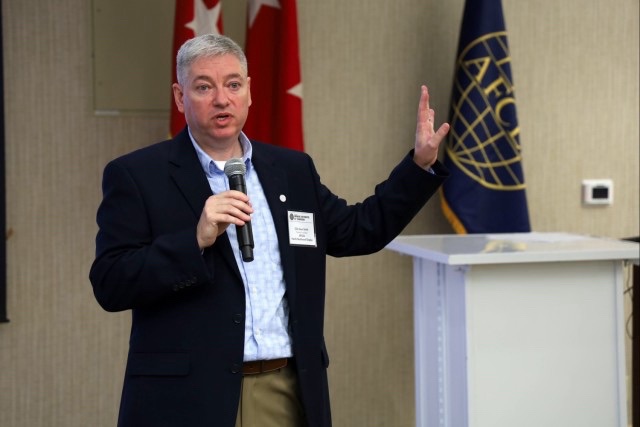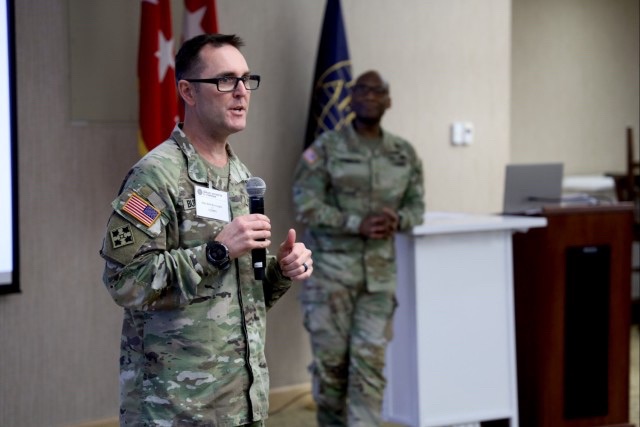
JOINT BASE LEWIS-MCCHORD, Wash. — Service members, tech industry professionals and academia gathered together at JBLM’s American Lake Conference Center for the Armed Forces Communications & Electronics Association’s second annual Enabling Distributed C2 Symposium from Jan. 31-Feb. 1, 2024.
“One of the things that we wanted to do is provide a venue and event that would bring together industry, the military and academia to hear the challenges that leadership in the military has that we can help solve,” said Dave Stookey, treasurer of the AFCEA Northwest Chapter. “The Army and Air Force communicate what problems they’re having, especially in the INDOPACOM area, and then industry and academia have a better idea of what they’re asking for and how we can bring solutions. There are companies who have solved some of the same issues that maybe the Army or the Air Force could consider putting into use.”

At the forefront of the conference was a discussion about how technological innovation helps commanders attain better command and control while operating in the Indo-Pacific theater.
“One thing that we’re finding is that as technology improves, commanders want better visibility into what’s happening, better situational awareness and better information,” said Stookey. “Better technology enables the distributed C2 to get the right information to the right people in austere or challenged environments.”
Col. Rett Burroughs, the First Corps chief information operations officer (G6), elaborated on how better technology and data collection enable commanders to make better, informed decisions.
“Commanders have to know the data, they have to understand what they need and what’s missing from their requirements to make an informed decision,” said Burroughs. “Maybe you’re wearing a parachute and you and I are going to jump out of this airplane in 15 hours. We want to get an enemy read because they’re not going to wait till we land to start shooting at us. Technology has the ability to help us get the information that we need to make informed decisions, faster.”

Stookey elaborated on new strides the technology industry is making to control the amount and relevance of information commanders have access to.
“If you’re down range and you want information, you’re trying to pull the whole information search and that’s wrong,” he said. “What industry is doing is refining how you do a search when you’re at the edge. And then you do a query and only pull back what you need.”
Technology enabling greater command and control also helps mitigate the “tyranny of distance,” one of the most significant challenges I Corps faces operating in the Pacific.

“The tyranny of distance is always uppermost in my mind,” said Burroughs. “Because how am I going to get comms all the way to Australia and then to Thailand? We can provide at least a minimum of voice so Lt. Gen. Brunson can talk to the 7th Infantry Division commander who may be in Chitose, Japan. But we’re also working on building a better data infrastructure as well.”
Stookey talked about one of the ways the industry is helping I Corps overcome this obstacle.
“One of the areas industry is doing a lot is taking the cloud across the ocean,” said Stookey. “If you’re connected and you’re in the United States, that works great. But when you’re 6,000 miles away or in a country that doesn’t have the greatest fiber connection, what do you do? What the industry is doing is they’re putting that cloud computing in a box that can be the same size as a roll luggage. You can take it with you and then all you have to transact with the cloud is the minimum amount of data you need.”
With the amount of data commanders have access to and the speed at which they can get it, commanders can make better decisions faster.
“… Commanders need to be able to hear the confidence in a subordinate voice to know that they truly understand the task, mission, purpose, and the intent,” said Burroughs. “And if he can hear that and then free up his commanders to fight, then we’ve achieved success.”
By SGT Keaton Habeck

